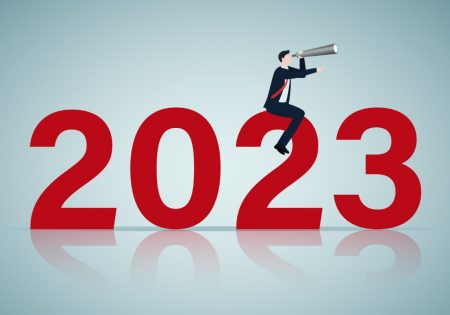Equity Market Records Always Raise Questions
In the same way that significant dips in equity prices cause head scratching and consternation, new market records also present a moment of pause, especially during a pandemic that seems to be worsening once again.
Market watchers reported a new record-high intraday price for the Dow Jones Industrial Average around mid-day Tuesday, when the well-known equity market index broke the 30,000 point barrier for the first time. The Dow later went on break another record by closing above 30,000 as well, ending the day at 30,046.24.
The news caused understandable celebration from market watchers, but it also prompted some head scratching about what comes next, not least because the coronavirus pandemic seems to be worsening in many regions around the globe—especially in Europe and the United States, as well as in key developing markets.
Commentary shared by Greg Hahn, president and chief investment officer (CIO) at Winthrop Capital Management, offers some context for the impressive numbers. Clearly, he says, economic growth has recovered admirably since the lows of March and April, but growth will likely be slower in the first half of 2021, as efforts to control the spread of the coronavirus intersect with the rollout of the vaccine.
“Recovery will be slow in the industries most affected by the COVID-19 virus, including retail, travel, hospitality and restaurants,” Hahn says. “In some cases, such as the airline and hotel industries, it will take several years to return to pre-pandemic levels.”
Stepping back, Hahn says the labor market is the key to sustained economic growth in the U.S. In October, the unemployment rate declined by 1 full percentage point, reaching 6.9%, while the number of unemployed persons fell by 1.5 million, to 11.1 million.
“While significant progress has been made in the labor market since April, when 23.1 million people were out of work and the rate of unemployment hit a record 14.7%, we expect progress to be slow from current levels,” he warns. “Interest rates will remain low and credit spreads will remain tight in spite of a growing number of zombie companies.”
Beyond vaccine hopes, Hahn says, it seems clear that the markets have reached a new high partly based on growing expectations that the federal government will be able to reach an accord on a new fiscal stimulus package. Relatedly, late Monday saw the Trump administration take a key step toward transitioning power to the incoming administration of Democratic President-elect Joe Biden, as the General Services Administration announced it is ready to begin the formal transition process—a signal the markets have interpreted favorably. Looking forward, Hahn says, politics will certainly have an impact on the capital markets in 2021.
“The capital markets are expecting fiscal stimulus,” he says. “However, on the heels of the prolonged negotiations leading up to the election, we expect more gridlock next year. Congress has essentially operated in partisan gridlock for 15 years. America is a divided country, and President-elect Biden will be challenged to pull together a significant fiscal stimulus package that has support from the Republicans.”
Though she says she is also optimistic for near-term fiscal stimulus, Sierra Mutual Funds’ Terri Spath, co-portfolio manager of the Sierra Tactical All Asset Fund and CIO of the firm, says there is a lot that remains unknown at this juncture.
“In an extraordinary move, both sides of the aisle came together earlier this year with the $3 trillion fiscal stimulus bill that triaged the American economy,” she says. “However, if House Speaker Nancy Pelosi and Treasury Secretary Steven Mnuchin are unable to get an additional stimulus bill passed this year, it will surely be a No. 1 priority for the Biden administration in January 2021.”
Spath credits the Federal Reserve for helping to propel markets to their current record-setting levels.
“The Federal Reserve [Board members] are heroes in their commitment to keeping rates low and stabilizing the financial markets,” she says. “Although the Fed has stated loudly that its ability to help in this crisis is limited without fiscal stimulus, one of the most important players for the U.S. economy is Fed Chair Jerome Powell.”
Daniel Phillips, director, asset allocation strategy, at Northern Trust Asset Management, says there have been several developments that made investors optimistic, but he cautions that the long-term picture might not be as rosy.
“We have gotten one bit of good news after another the past few weeks that are allowing markets to look through what will be a very long winter for the economy,” Phillips says. “An expected divided U.S. government and weekly positives on the vaccine front have been early Christmas presents for investors. Meanwhile, while further fiscal support has been delayed, monetary support is unwavering. Markets should continue to trend higher near-term—but longer-term issues such as elevated valuations, pandemic-related economic scarring and the specter of inflation will act as headwinds over the medium to longer term.”
Hahn ticks off a list of factors that could drag markets down before the pandemic is overcome. He warns that economic growth in Europe is “plunging” as the coronavirus spreads through the region. At the same time, the financial health of U.S. states and cities will continue to deteriorate as a result of the pandemic, he says, prompting a need for federal assistance. Spath says ongoing trade tensions between the U.S. and China could be a factor in the markets’ future performance as well.
“Still, as the risks to the spreading pandemic subside and the economy shows signs of recovery, we expect a sharp recovery in 2021 for the stocks that were heavily affected by the coronavirus,” Hahn says. “Again, this includes the equity of airlines, hotels and gaming companies, among others. However, companies that have adapted well to the new economy, operating more efficiently and allowing a more mobile work force, will thrive.”
You Might Also Like:

Crossmark’s Doll Projects Long-Predicted Recession to Materialize in 2024

Doll Scores 50/50 on 2023 Predictions
